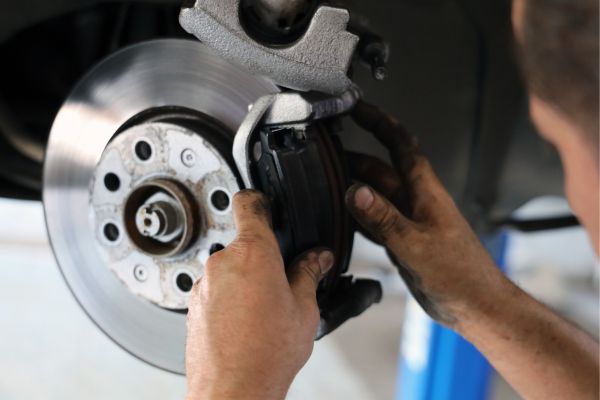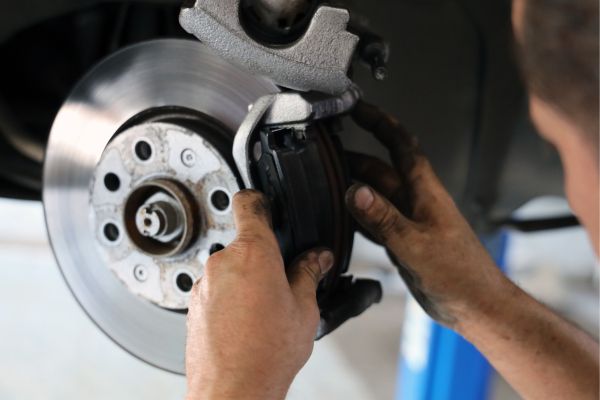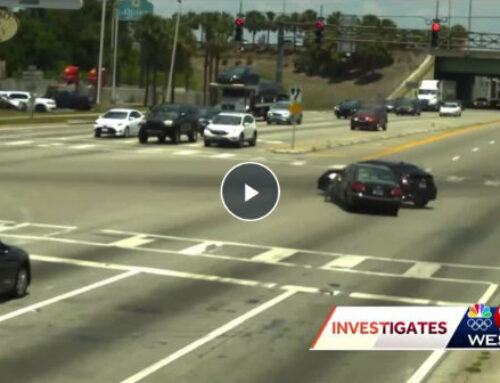Automatic emergency braking (AEB) is an advanced safety technology that can slow or fully stop a vehicle without driver input. AEB systems rely on cameras, radar, or other sensors to identify potential collisions with objects in the vehicle’s path and automatically activate the braking system. The AEB systems found in most new cars will bring the vehicle to a full and complete stop at slower speeds, while a few systems work at higher speeds. Some, but not all, systems can recognize and brake for pedestrians, cyclists, and animals. AEB systems do not guarantee that a collision will be avoided, but they will try to stop the vehicle in time under typical situations, or at a minimum, slow the vehicle to reduce the severity of the impact.

The National Highway Traffic Safety Administration (NHTSA) has proposed a rule that would require automatic emergency braking and pedestrian AEB systems on passenger cars and light trucks, which is expected to dramatically reduce crashes associated with pedestrians and rear-end crashes. The proposed standard would require the technology to work at speeds ranging from 6 to 50 miles per hour. The American Trucking Associations, the industry’s largest lobbying group, welcomed the announcement.
AEB is currently standard equipment on almost all new vehicles, and most current systems can detect pedestrians and some can stop for cyclists, motorcycles, and even large animals. However, AEB systems need to evolve to prevent higher-speed crashes, as they can’t prevent all crashes. For example, none of the AEB systems are designed to prevent “T-bone” crashes at intersections or left turns in the path of oncoming traffic.
In conclusion, AEB is an important safety technology that can help prevent or reduce the severity of collisions. The proposed rule by NHTSA to require AEB systems on passenger cars and light trucks is expected to save lives and prevent crashes. However, AEB systems need to evolve to prevent higher-speed crashes and cannot prevent all types of crashes.
What are the limitations of automatic emergency braking technology?
The limitations of automatic emergency braking (AEB) technology include:
- Limited speed range: Most AEB systems are designed to work at slower speeds, typically ranging from 6 to 50 miles per hour. This means that at higher speeds, AEB may not be able to fully stop the vehicle in time to prevent a collision.
- Recognition limitations: While some AEB systems can recognize and brake for pedestrians, cyclists, and animals, not all systems have this capability. This means that AEB may not be effective in preventing collisions with certain types of objects or obstacles.
- False activations: AEB systems rely on cameras, radar, or other sensors to detect potential collisions. However, these systems can sometimes activate when there are no real threats, leading to false activations. This can be frustrating for drivers and may result in unnecessary braking.
- Limited protection in certain scenarios: AEB systems are primarily designed to prevent or reduce the severity of rear-end collisions. They may not be effective in preventing other types of crashes, such as “T-bone” crashes at intersections or collisions during left turns in the path of oncoming traffic.
- System variations: The effectiveness and capabilities of AEB systems can vary depending on the manufacturer and model of the vehicle. Some systems may perform better than others in terms of detection accuracy and response time.
It is important for drivers to understand the limitations of AEB technology and not solely rely on it for their safety. AEB is meant to assist drivers and reduce the risk of collisions, but it is not a foolproof solution. Drivers should always remain attentive and ready to take control of the vehicle if necessary.
How effective is automatic emergency braking in preventing collisions with pedestrians and cyclists?
According to a study, automatic emergency braking (AEB) has great potential to avoid and mitigate collisions with pedestrians and bicyclists, but it cannot avoid all collisions. The effectiveness of AEB in preventing collisions with pedestrians and cyclists depends on the system’s design and capabilities. Some AEB systems can recognize and brake for pedestrians, cyclists, and animals, while others may not have this capability. AEB systems rely on cameras, radar, or other sensors to detect potential collisions, and they automatically activate the braking system when these technologies identify the potential for a collision with an object in the vehicle’s path. However, AEB systems may not be effective in preventing collisions with pedestrians who are walking in the same direction as the vehicle is traveling. AEB systems are primarily designed to prevent or reduce the severity of rear-end collisions, and they may not be effective in preventing other types of crashes, such as “T-bone” crashes at intersections or collisions during left turns in the path of oncoming traffic.
In conclusion, AEB has great potential to avoid and mitigate collisions with pedestrians and cyclists, but it cannot avoid all collisions. The effectiveness of AEB in preventing collisions with pedestrians and cyclists depends on the system’s design and capabilities. AEB systems are primarily designed to prevent or reduce the severity of rear-end collisions, and they may not be effective in preventing other types of crashes.
Conclusion
In conclusion, automatic emergency braking (AEB) is an important safety technology that has the potential to prevent or reduce the severity of collisions. AEB systems rely on cameras, radar, or other sensors to detect potential collisions and automatically activate the braking system. While AEB can be effective in avoiding rear-end collisions and mitigating crashes with pedestrians and cyclists, it is not foolproof and cannot prevent all types of collisions. The effectiveness of AEB depends on the system’s design, capabilities, and the specific circumstances of the collision. It is crucial for drivers to understand the limitations of AEB and not solely rely on it for their safety. Drivers should remain attentive and ready to take control of the vehicle if necessary. AEB is a valuable tool in enhancing road safety, but it should be used in conjunction with responsible driving practices and awareness of the road environment.






